Riis forstod, at de velstillede måtte se storbyens forfærdelige fattigdom med egne øjne, hvis noget skulle forandres.
Han slog sig sammen med to amatørfotografer, Henry Piffard og H.G. Lawrence, og de tog billeder af de motiver, Jacob A. Riis udpegede. Mange af de første fotografier, Riis brugte, er derfor taget af Piffard og Lawrence efter anvisninger fra ham, og det er derfor Riis, der er krediteret på dem.
I dag er det Museum of the City of New York, som ejer rettighederne til Jacob A. Riis’ billeder.
Dyk ned i billedsamlingen hos Museum of the City of New York
Billedet ”Bandits’ Roost” er blevet indbegrebet af 1800-tallets New York-underverden, og i filmen ”Gangs of New York” fra 2002 har instruktøren Martin Scorsese genskabt billedet på lærredet.
Henry G. (Henry Granger) Piffard (1842-1910) and Richard Hoe Lawrence for Jacob A. (Jacob August) Riis (1849-1914) / Museum of the City of New York. 90.13.4.104
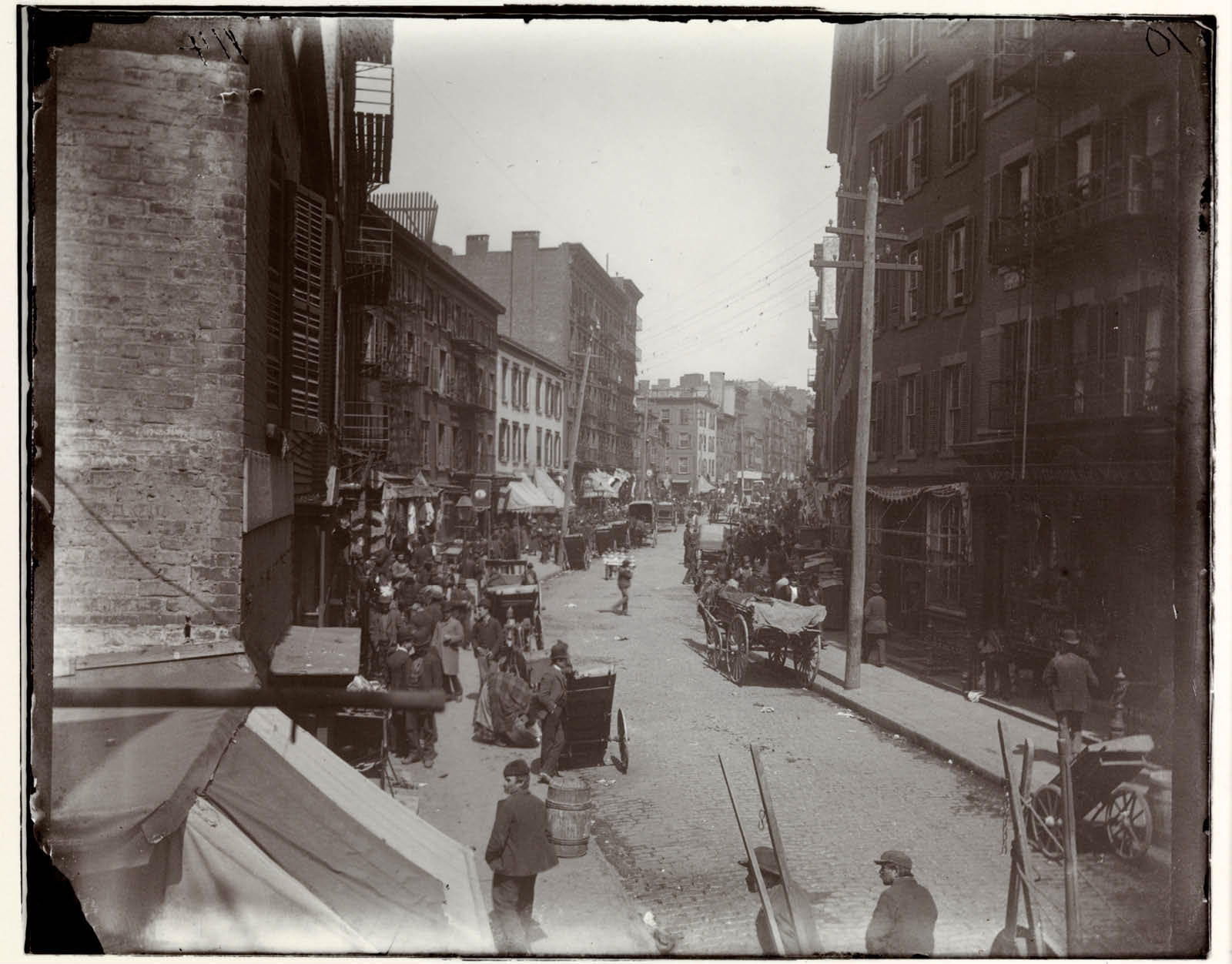
Riis så Mulberry Bend som slummens værste sted og kæmpede ihærdigt for at få området fjernet. Sommeren 1895 blev alle husene til venstre revet ned til fordel for en park. Riis tog billedet umiddelbart inden som dokumentation af sin sejr.
Jacob A. (Jacob August) Riis (1849-1914) / Museum of the City of New York. 90.13.4.117
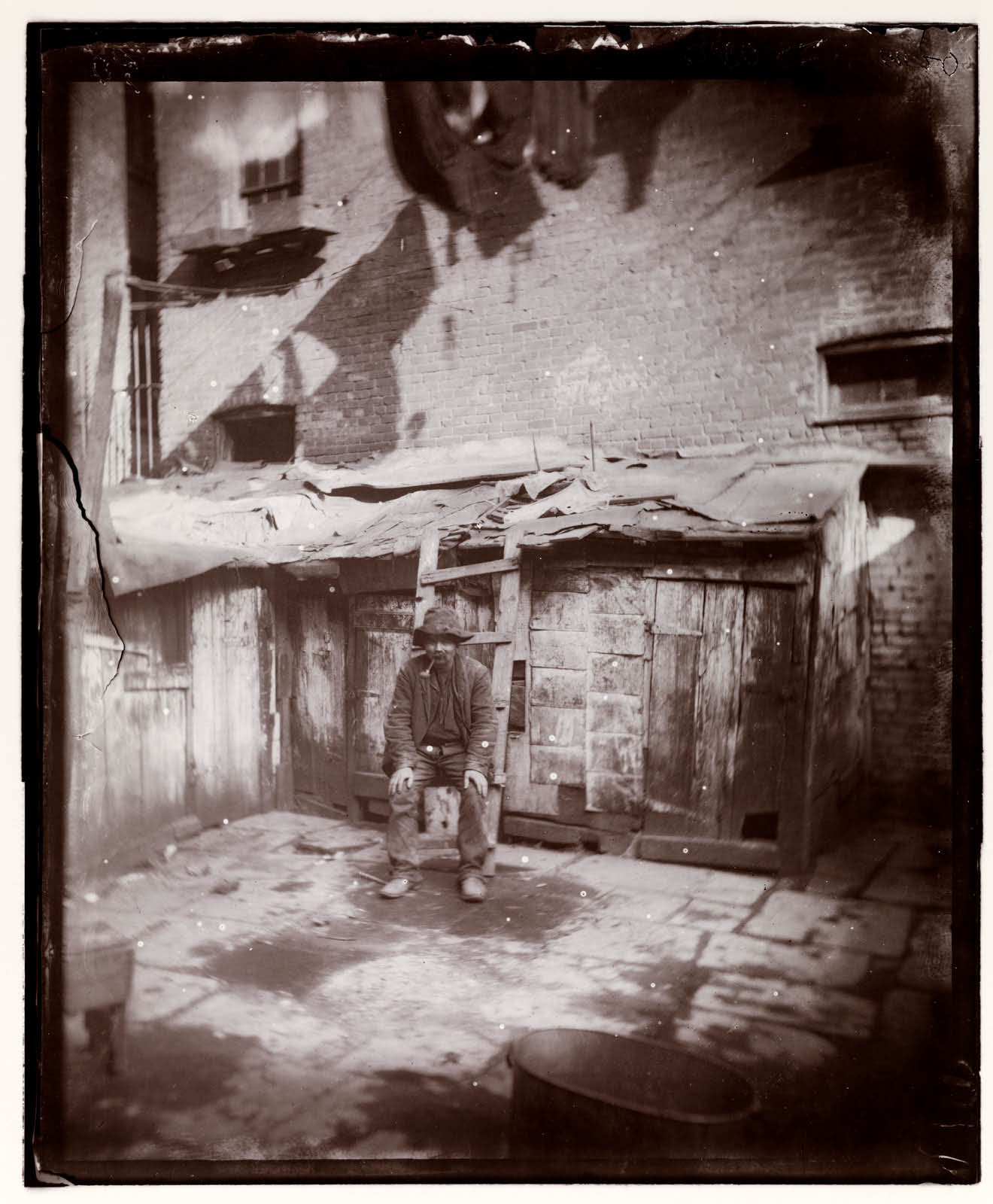
Riis foragtede vagabonder og beskrev, hvordan vagabonden her var doven og havde forlangt ekstra betaling for at tage sin pibe i munden. ”Er man først blevet vagabond, fortsætter man, for det er det mest bekvemme”.
Richard Hoe Lawrence and Henry G. (Henry Granger) Piffard (1842-1910) for Jacob A. (Jacob August) Riis (1849-1914) / Museum of the City of New York. 90.13.4.93
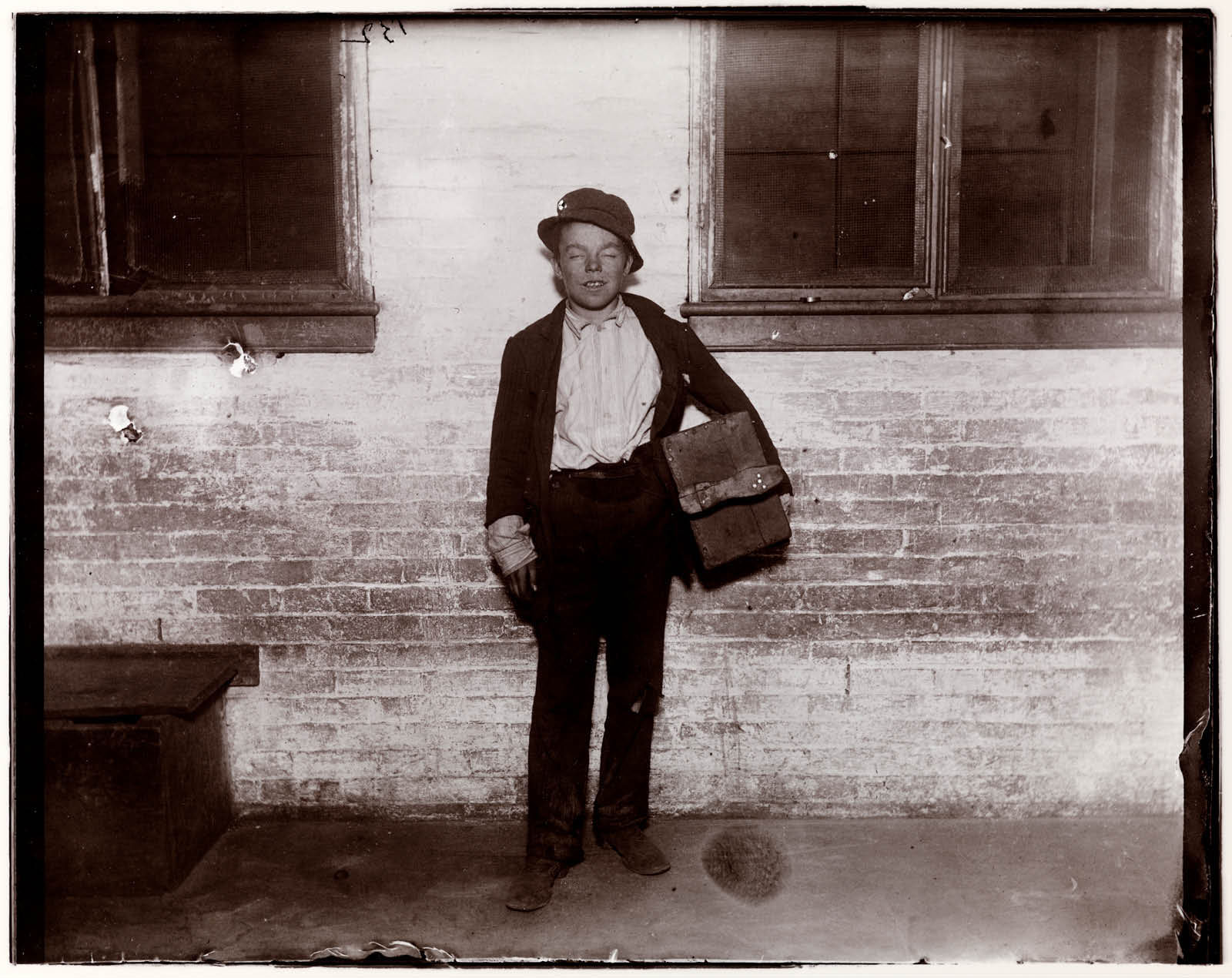
Tommy levede af at pudse sko, havde ingen far og foretrak at bo på gaden, selvom hans mor opsøgte ham igen og igen. Riis kunne lide ham, men kaldte ham ”den mest håbløse slubbert, jeg nogensinde har mødt”.
Jacob A. (Jacob August) Riis (1849-1914) / Museum of the City of New York. 90.13.4.135
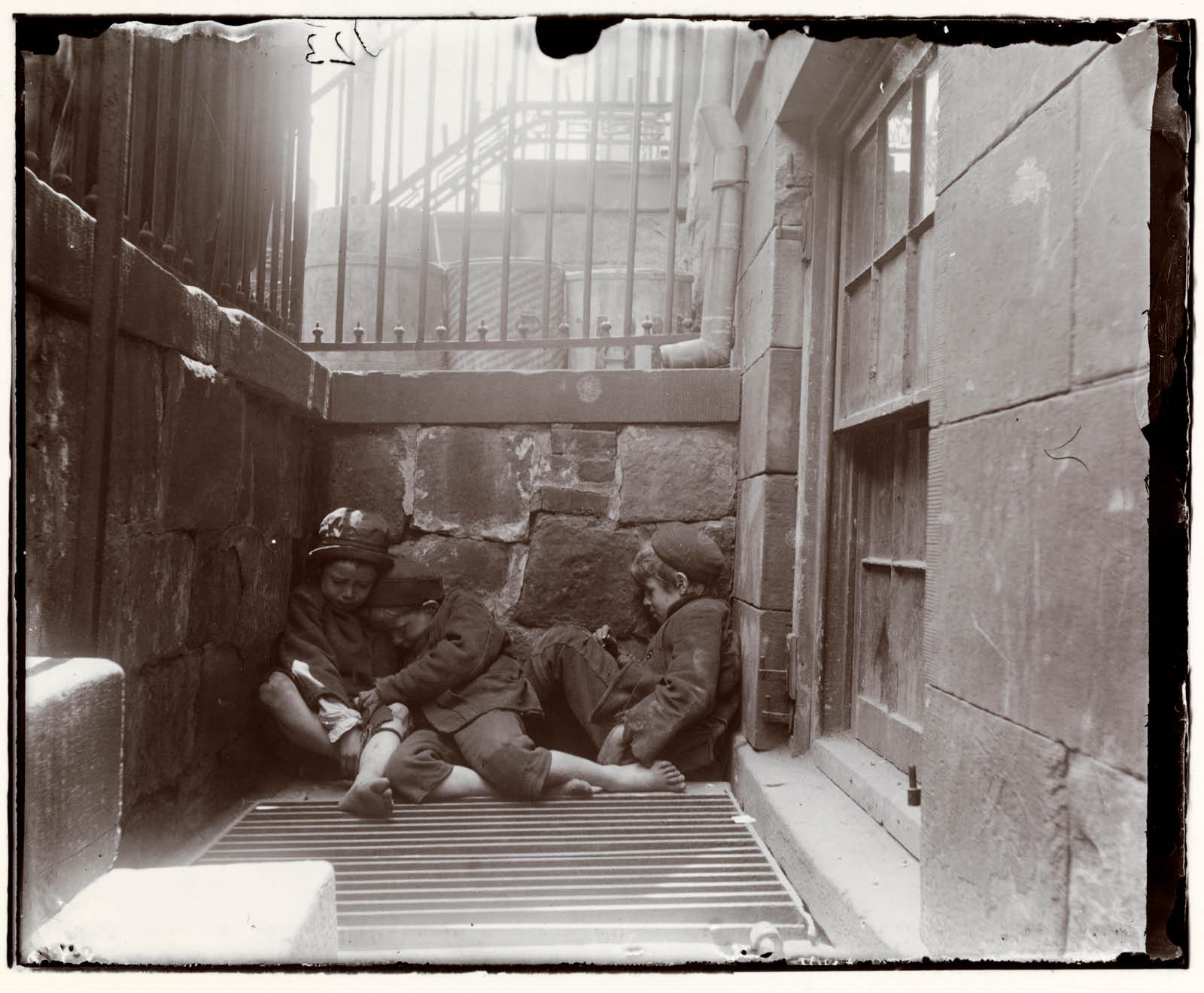
Riis var meget opmærksom på slumbørnenes vilkår. Han tog derfor flere billeder af de hjemløse børn i deres natlogi. På billedet her har han bedt de hjemløse drenge vise, hvordan de sov sammen.
Jacob A. (Jacob August) Riis (1849-1914) / Museum of the City of New York. 90.13.4.125
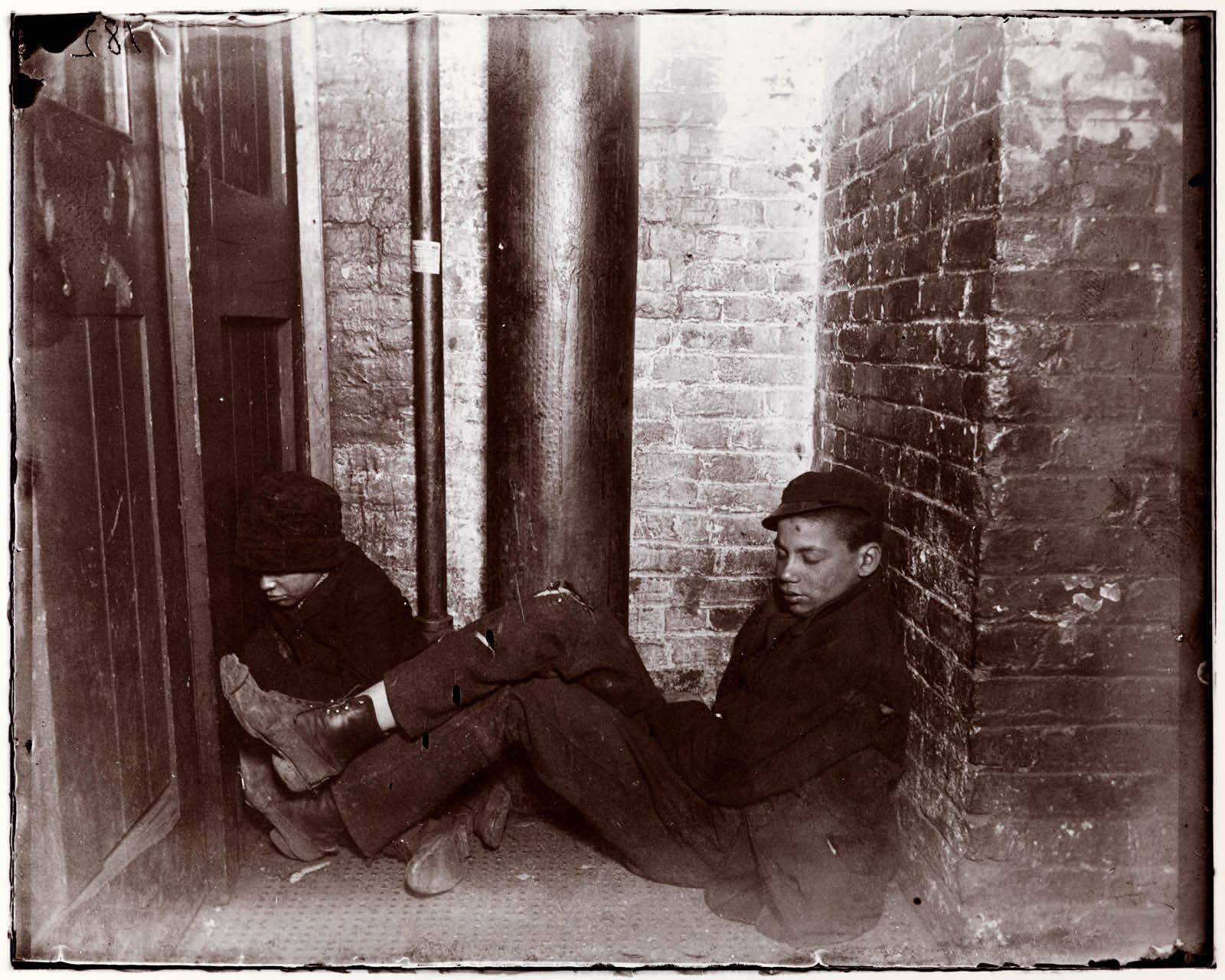
Riis beskrev, hvordan mange børn selv valgte at sove på gaden. Måske fordi de ikke havde solgt alle deres aviser, eller fordi de havde spillet lønnen op og derfor ikke turde gå hjem, hvor dagens indtjening skulle afleveres til familien.
Jacob A. (Jacob August) Riis (1849-1914) / Museum of the City of New York. 90.13.4.186
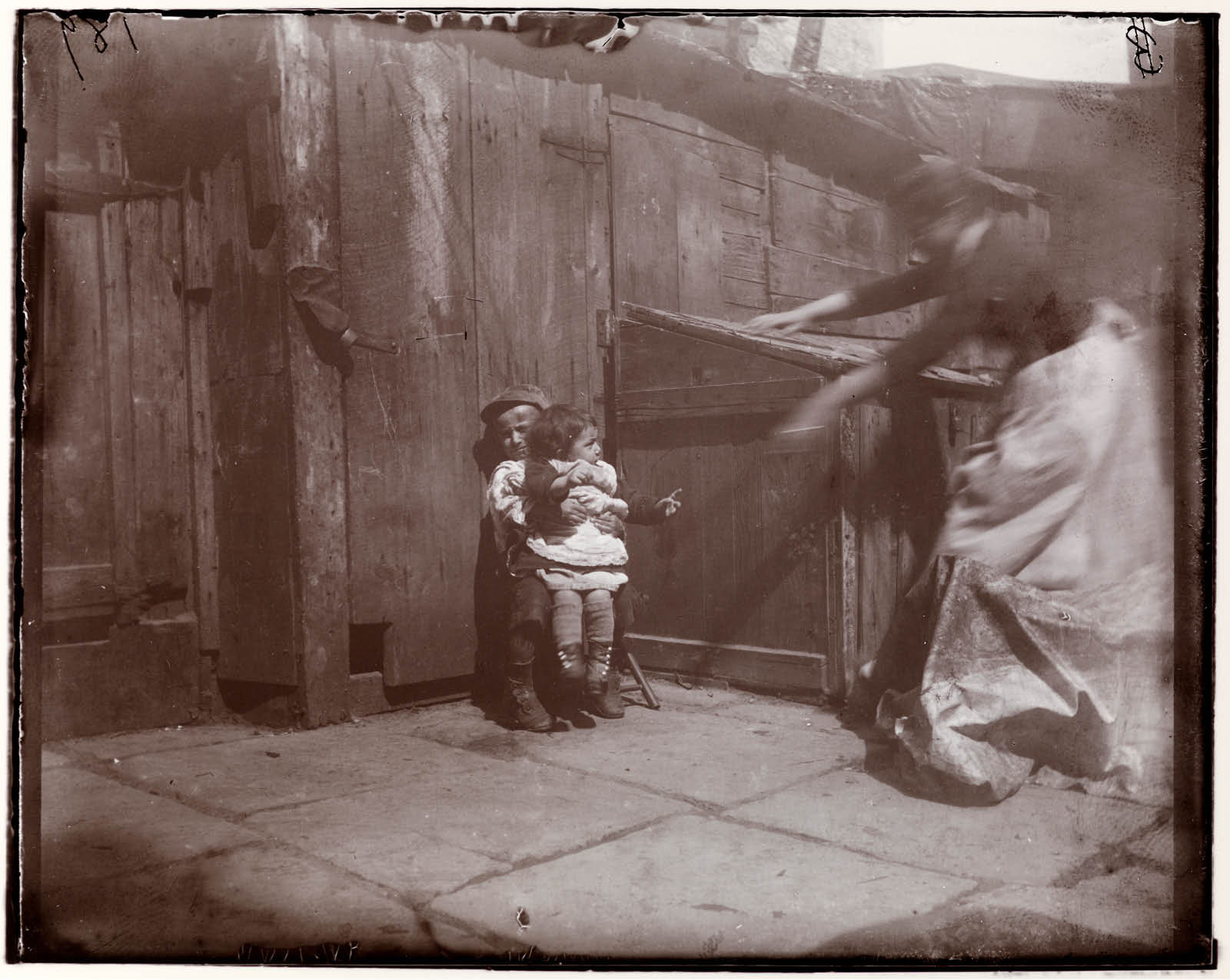
Fotografiet er sandsynligvis opstillet for at blive brugt som eksempel på, hvordan børn måtte passe hinanden mens moderen er på arbejde. I hvert fald er moderen skåret væk på gengivelsen af fotografiet i en artikel i “The Illustrated American”.
Jacob A. (Jacob August) Riis (1849-1914) / Museum of the City of New York. 90.13.4.193
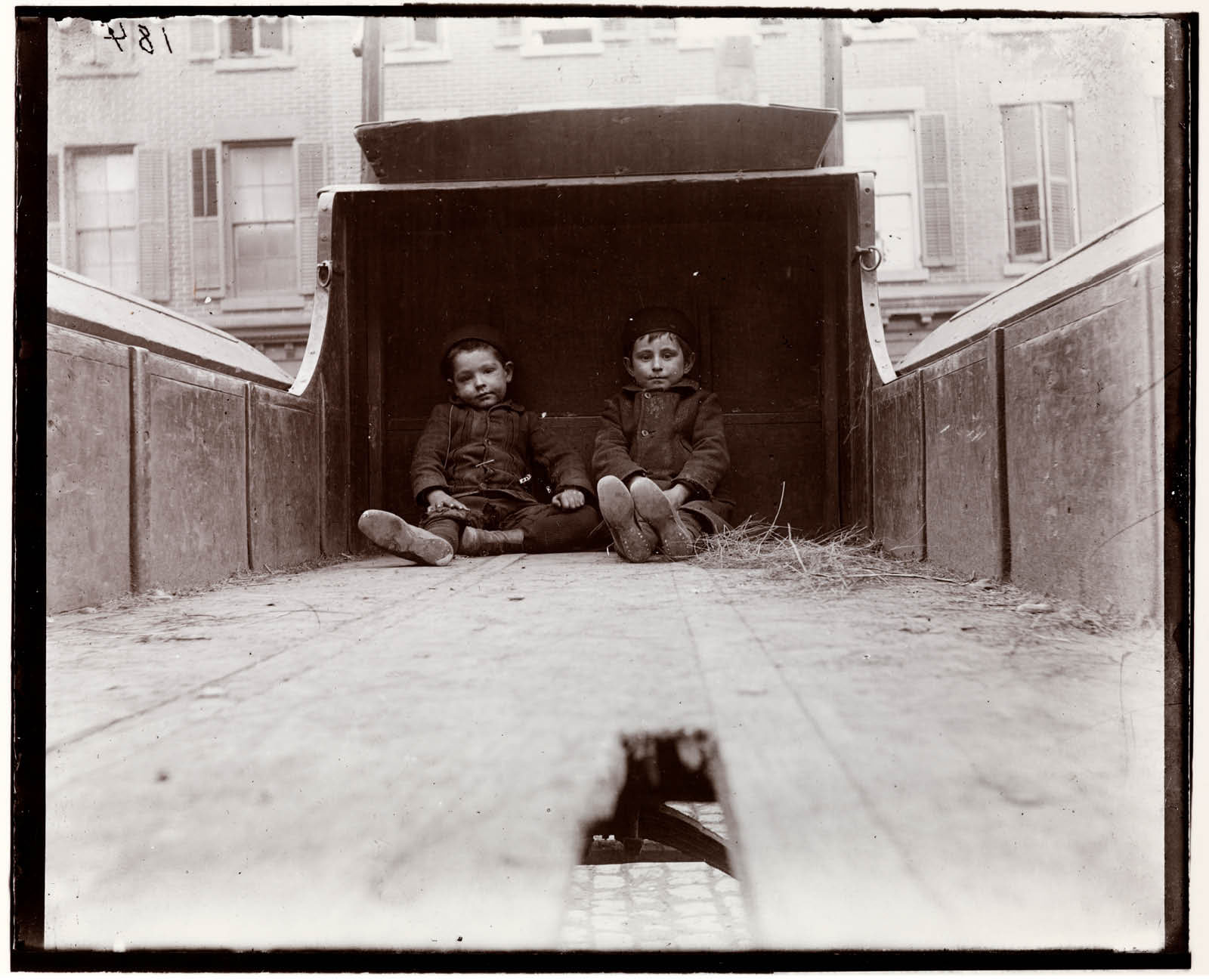
De to drenge brugte det tomme lad på deres fars lastbil som legeplads. Ifølge Riis var gaden deres eneste anden legeplads, og den var dækket af et 15 cm tykt lag mudder og søle.
Jacob A. (Jacob August) Riis (1849-1914) / Museum of the City of New York. 90.13.4.188
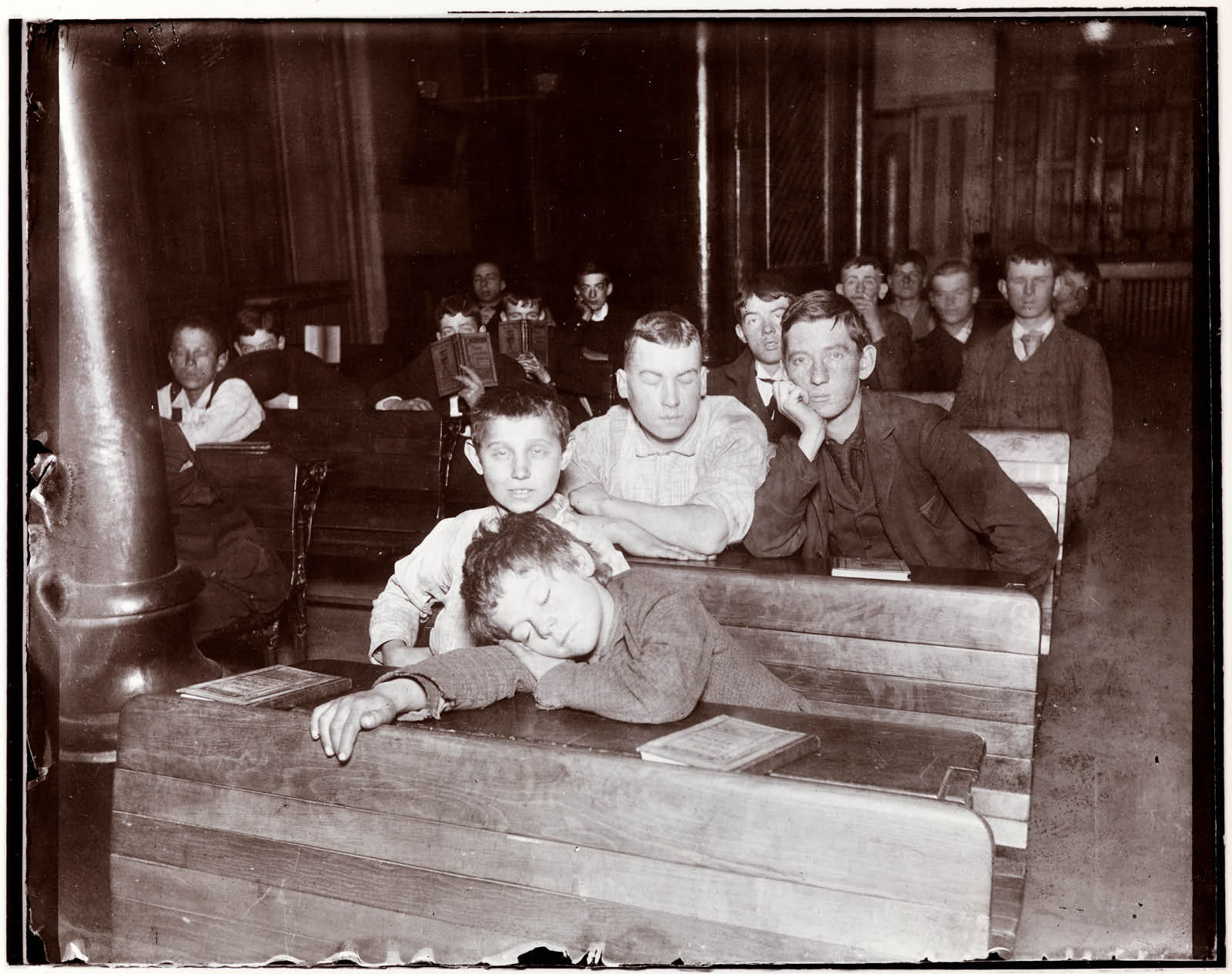
Den sovende 9-årige Edward var forældreløs men tjente sine egne penge som råber for en dørsælger. Edward var faldet i søvn på skolebænken i aftenskolen i herberget på Seventh Avenue fuldstændig udmattet efter en lang dags arbejde.
Jacob A. (Jacob August) Riis (1849-1914) / Museum of the City of New York. 90.13.4.173
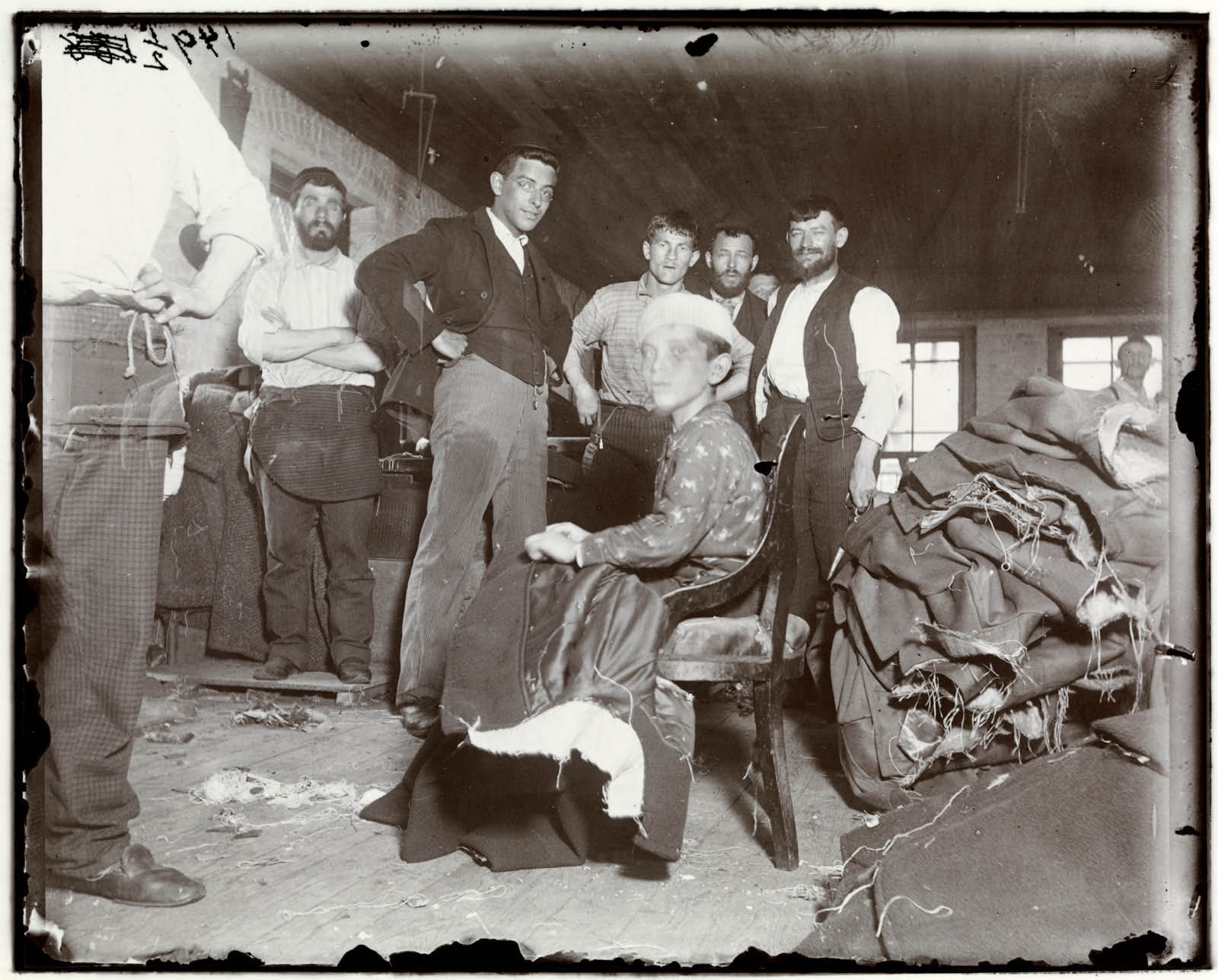
Riis fortæller, at drengen i det lille lejekaserne-værksted på det bestemteste havde angivet sin alder til at være 16 år. Men da Riis krydsforhørte drengen, indrømmede han, at han var 12 og altså ikke gammel nok til at arbejde lovligt.
Jacob A. (Jacob August) Riis (1849-1914) / Museum of the City of New York. 90.13.4.152
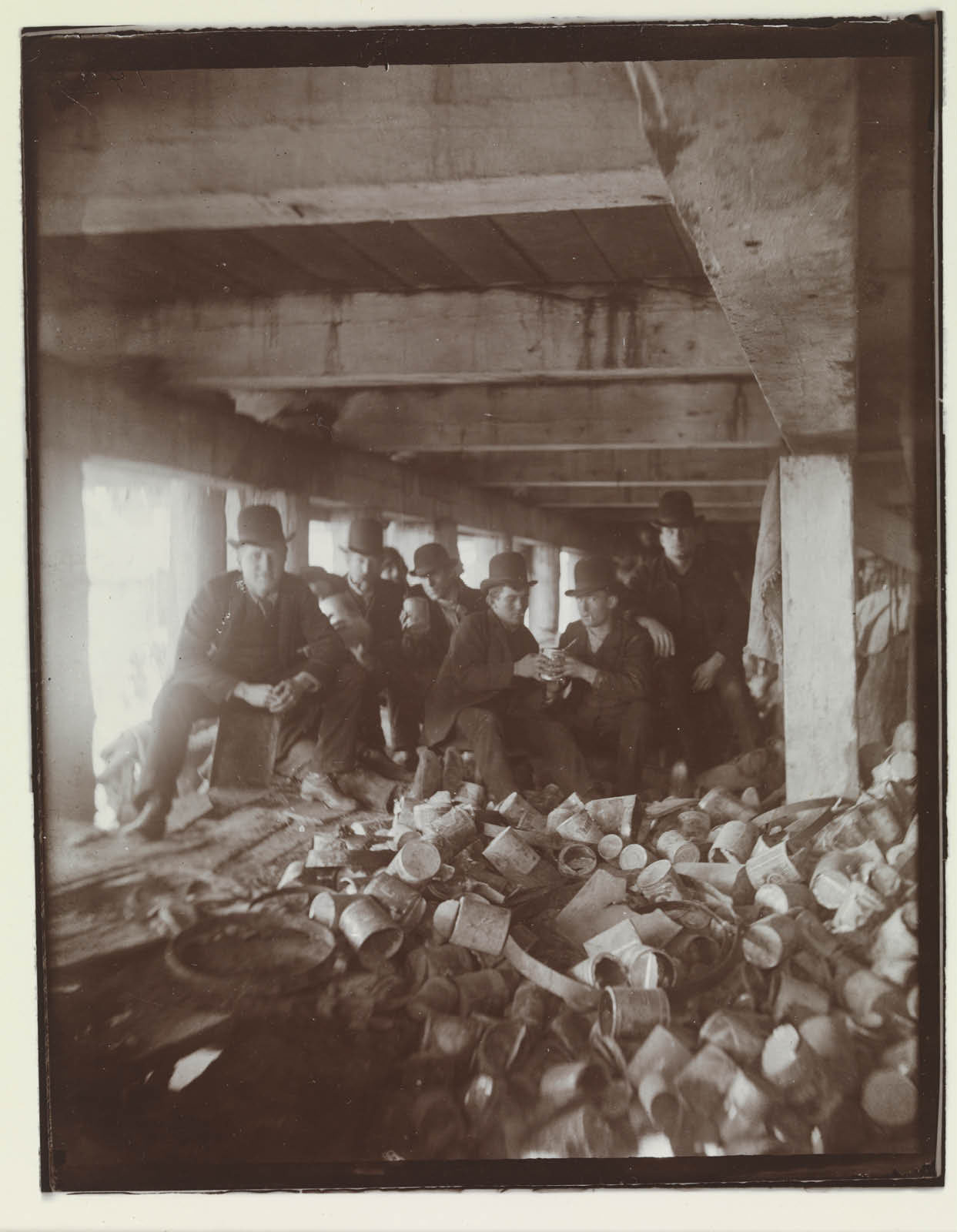
Vogne tippede affald ned i flodpramme fra høje “dumps”, lossepladser. Under en dump fotograferede Riis en berygtet bande, som han kaldte ”rotter”. De sneg sig langs flodbredden om aftenen og ”hver dag skyller et lig i land med tomme lommer”.
Jacob A. (Jacob August) Riis (1849-1914) / Museum of the City of New York. 90.13.4.144